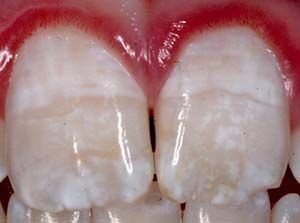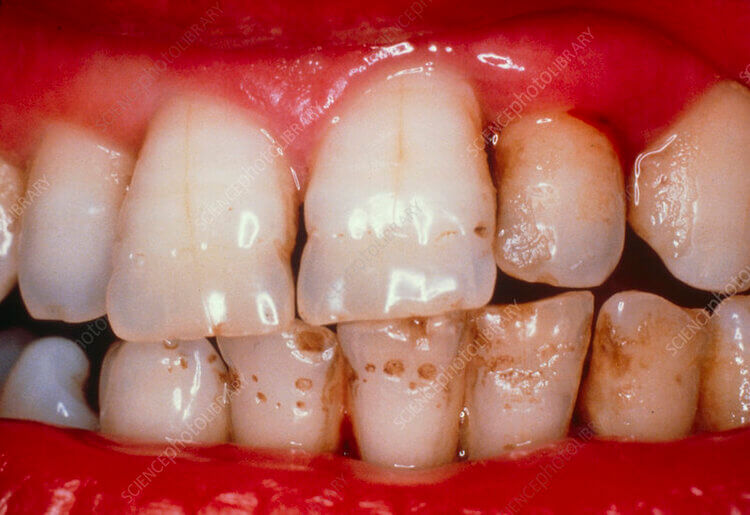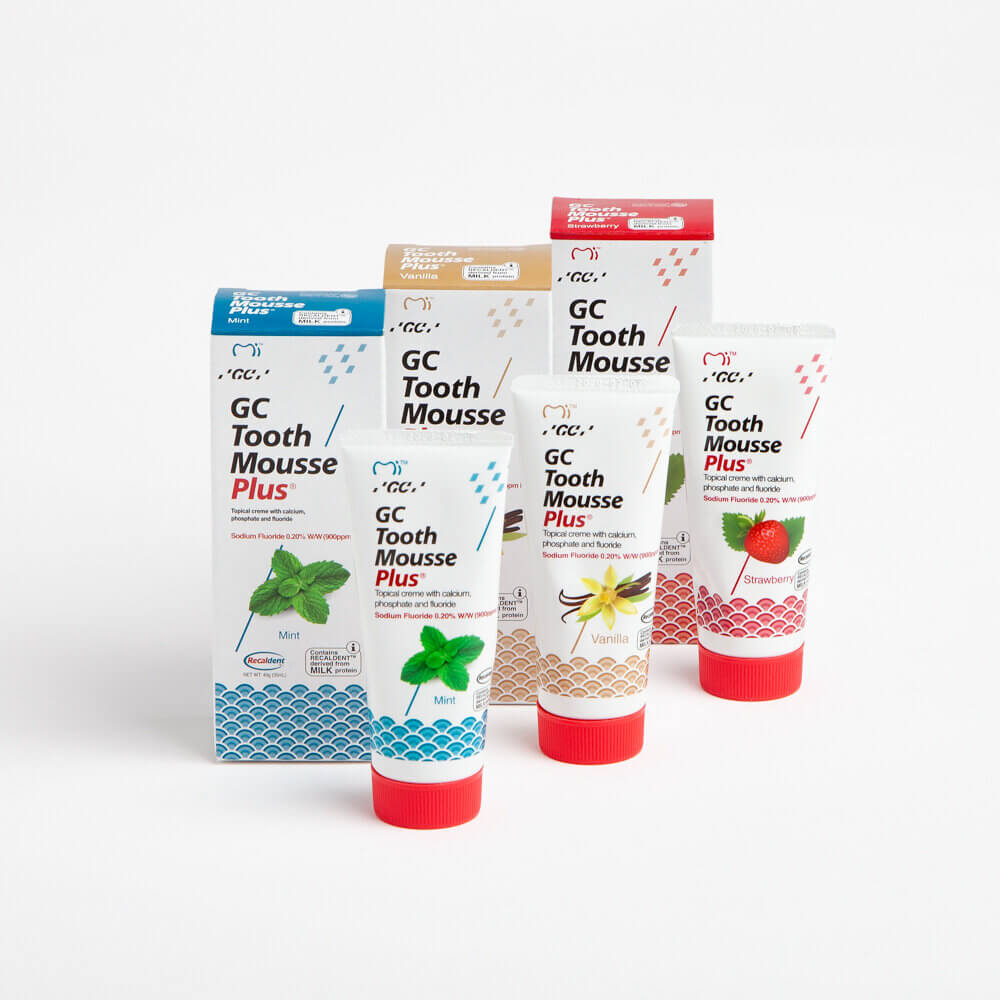White Spots On Teeth – What Are They?

This shade of white is different from the rest of your teeth, and some people find this bothersome. White spots on the teeth may be a sign of decay, so it’s important to identify the cause.
Causes of white spots on teeth
White spots usually develop on your teeth because of more than one cause. Your dentist can explain specific causes, and then determine the best way to treat your condition. Common causes include:
White Spots On Teeth – What Are They?
1. DIET
Eating too many acidic foods can cause white spots on your teeth. This is because highly acidic foods eat away at your tooth enamel. This outer layer protects your teeth from damage.
A diet high in sugar also causes the formation of acidic plaque, which can erode enamel. Acidic foods and drinks include sodas and certain fruits, such as lemons, oranges, and grapefruit.
Acid reflux is another trigger because it produces acid in the stomach, throat, and mouth. As your tooth enamel breaks down, you may experience other symptoms like sensitivity to cold or hot foods and drinks.
2. FLUOROSIS
Fluoride strengthens teeth and prevents decay, but too much fluoride in developing teeth can have the opposite effect, causing decay and discoloration. This can happen when children consume too many fluoridated beverages or swallow fluoride toothpaste. Fluorosis also causes pitted enamel, which makes it harder to brush and clean teeth.
3. ENAMEL HYPOPLASIA

Taking antibiotics to treat a fever can also interfere with nutrient absorption. Additionally, smoking while pregnant may cause this condition in children. Other symptoms of enamel hypoplasia include having grooves or lines in the teeth and tooth sensitivity.
4. PLAQUE ACCUMULATION
White spots on the teeth can also form due to an accumulation of bacteria plaque. This is the result of poor dental hygiene, such as not brushing or flossing on a regular basis. It can also occur as a side effect of wearing braces.
These spots, which may appear on the teeth after removing braces, are caused by a buildup of plaque deposits underneath or around the actual location of brackets. Insufficient oral hygiene or an inability to thoroughly remove plaque between brackets cause this demineralization of the tooth. The tooth may appear rough and chipped.
5. SLEEPING WITH YOUR MOUTH OPEN
You may notice white spots on your teeth when you wake up in the morning that go away after a few hours. This is often caused by sleeping with your mouth open all night. These white spots are caused by dehydration of the enamel surface of your teeth. Once saliva hits the teeth they will rehydrate and the white spots will disappear.
Being sick with a cold can make your more likely to sleep with your mouth open.
Treatment for white spots on the teeth
White spots on the teeth can bother some people, but there are a number of treatment options to eliminate these spots.

TOOTH MOUSSE
Tooth mousse contains a concentrated source of calcium and phosphate for strengthening and protecting teeth and can assist in countering the effects of acid produced by plaque. It is applied to the affected surfaces of the teeth, which can remineralise and strengthen the enamel. We have stock of Tooth Mousse available, so let our kind receptionists knowif you may want to purchase some.
MICROABRASION
This procedure removes a layer of enamel from the tooth’s surface using mild abrasion. This can remove white spots and improve the appearance of teeth.
BLEACHING
Bleaching is a tooth-whitening procedure that’s performed under a doctor’s supervision. This process helps balance the color of your tooth’s enamel. Treatment effectively lightens the entire tooth so that it matches the color of the white spots.
Bleaching is not an effective treatment for people who develop white spots on their teeth from overusing fluoride. This treatment can further bleach the white spots, resulting in the spots taking on a different shade of white.
VENEERS
Depending on the extent of the white spots, your doctor may suggest concealing them with a porcelain veneer. This involves the creation of a custom porcelain that is permanently bonded to the surface of your teeth.
CHIN STRAPS
Wearing a chin strap while you sleep can help you keep your mouth closed.
NASAL DECONGESTANTS
If a cold or other viral infection is making you congested, take nasal decongestants before bed. This will help you sleep with your mouth closed.
Prevention of white spots on teeth
To prevent white spots on the teeth, it’s important to practice good dental hygiene. This includes brushing and flossing on a regular basis. If possible, brush and rinse your mouth after every meal. You should also floss nightly and use an electric toothbrush designed to reduce plaque buildup.
A Waterpik helps remove plaque that accumulates around the brackets of braces and between teeth. Your Wagga dentist may also recommend toothpaste designed to remineralize enamel and protect your teeth from white spots.
Eating less sugar and less acidic foods can also protect the enamel and prevent white spots. If you’re expecting, quit smoking to encourage healthy tooth development in your child.
To prevent excess fluoride exposure in young children, monitor your children as they brush their teeth. They shouldn’t put too much toothpaste on the toothbrush, but rather apply a pea-size amount to the toothbrush.
Also, teach children not to swallow toothpaste while brushing. Monitor the amount of fluoride your child consumes, and cut back on their number of daily beverages if necessary. Fluoride is found in fruit juices, bottled water, and soft drinks.
